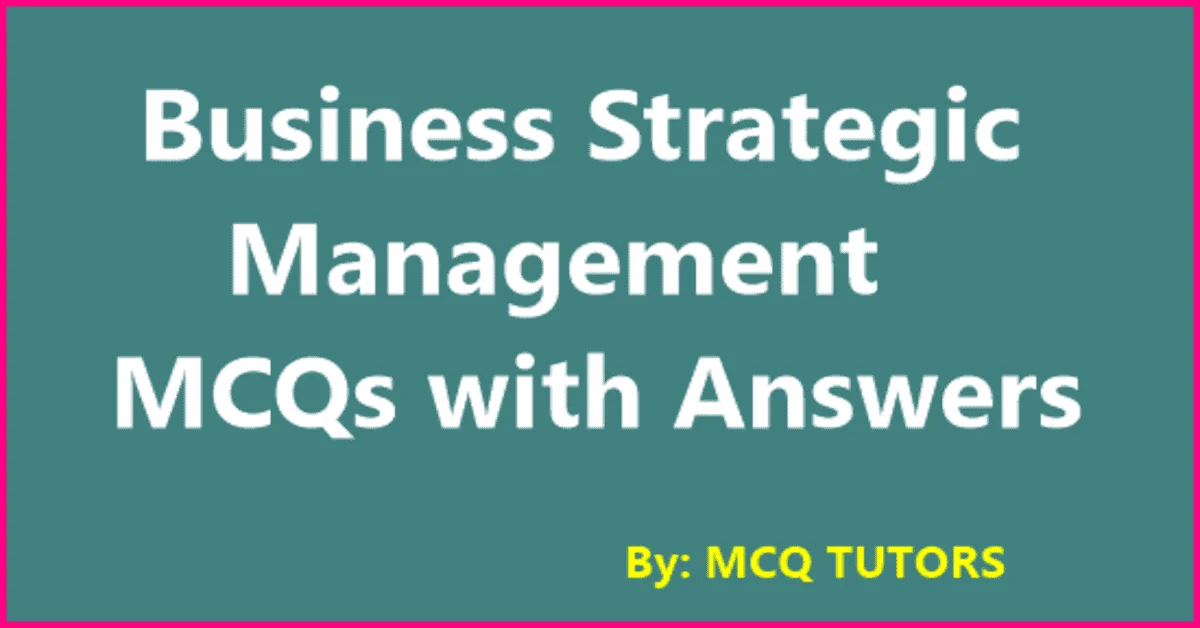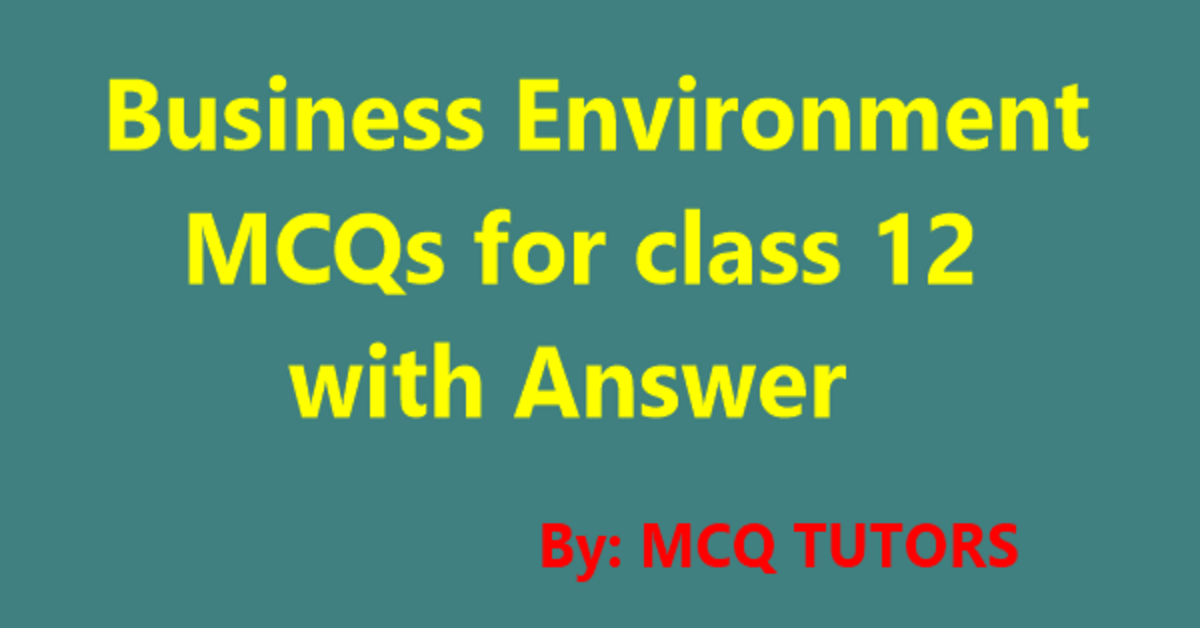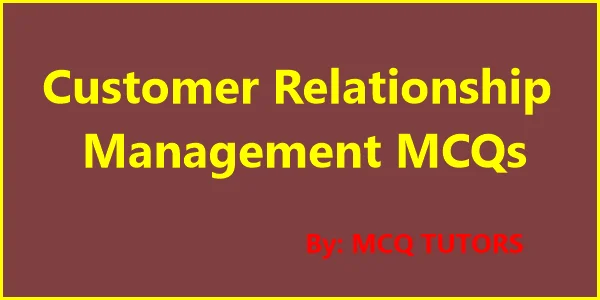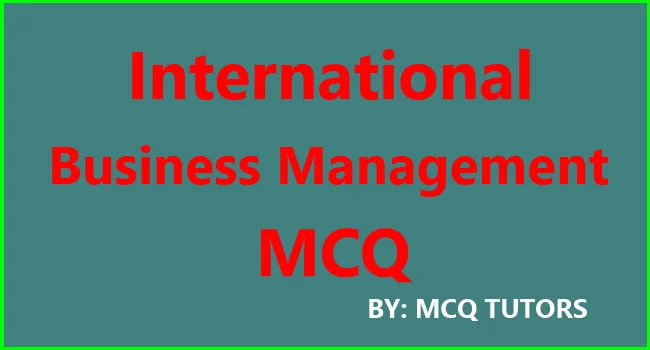Are you looking for the best Advanced Production and Operation Management MCQs? This article provides the latest practice questions to help you prepare for your upcoming exams.
With this collection of Advanced Production and Operation Management MCQs, you can test your knowledge of key concepts and evaluate your understanding of core principles.
In this guide, not only will you learn how to solve these types of questions but also get access to a range of topics from various sources.

50 Advanced Production and Operation Management MCQs with Answers
Q1. The ___ also influences the operation strategy of an organization.
a. Product Life Cycle
b. Service Life Cycle
c. Both a and b
d. Production life cycle
Ans: C
Q2. The increasing ___ means that the company cannot afford to let its quality levels drop as it ramps up its level of activity.
a. Production
b. Competition
c. Operations
d. Service
Ans: B
Q3. ___ determines how company organizes its value chain and performs activities.
a. Business Practices
b. Strategy
c. Trade-offs
d. Outsourcing
Ans: B
Q4. ___ strategy needs to keeps a slow manufacturing function aligned with a fast market place.
a. Manufacturing
b. Marketing
c. Operations
d. Improvement
Ans: A
Q5. ___ is the ability to finish critical data on product performance, process parameters and cost to internal groups & external customers.
a. Problem Solving
b. Information
c. Sales support
d. Field support
Ans: B
Q6. ___ can provide substantial competitive advantages especially when it is interwove with the marketing strategy.
a. Facility Location
b. Plant Location
c. Production Location
d. Distribution Network
Ans: A
Q7. The difficulty of gaining the competitive advantage depends on the performance of:
a. Customer
b. Competitor
c. Producer
d. Supplier
Ans: B
Q8. The ___ strategy has an important role in coordinating the operational goals to those of the organization.
a. Manufacturing
b. Marketing
c. Operations
d. Improvement
Ans: C
Q9. ___ techniques encompass the work systems, their design and the processes of planning and production control techniques.
a. Manufacturing Process
b. Production Techniques
c. Work Systems
d. Automated flow lines
Ans: B
Q10. Operation Systems are based on:
a. Output of the product
b. Specifications of the product
c. The flow pattern
d. All of the above
Ans: D
Q11. ___ is ideal when the service provided or the product manufactured is highly standardized.
a. Machine
b. Automation
c. ASRS
d. CNC Machines
Ans: B
Q12. Vision sensors are used for:
a. Inspection
b. Identification
c. Guidance
d. All of the above
Ans: D
Q13. ___ layout of arranging machines help in flexibility by maintaining efficient sequencing and scheduling.
a. Cellular
b. Plant
c. Product
d. Process
Ans: A
Q14. The dimensions of flexibility in manufacturing field are:
a. Variety
b. Volume
c. Time
d. All of the above
Ans: D
Q15. It is a process by which a new product is developed in small numbers so as to determine the suitability of material that may be encountered when full-scale manufacture is undertaken.
a. Sampling
b. Prototyping
c. Modeling
d. All of the above
Ans: B
Q16. ___ compel engineers to put in place equipments that balance their production rates.
a. Flow Line
b. Assembly Line
c. Production Line
d. Both b and c
Ans: A
Q17. The ___ contains a combination of people and the applications organized to meet business objectives.
a. Business Process
b. Business System
c. Business Model
d. Business strategy
Ans: B
Q18. ___ in the path, which show the activities that, should be completed before starting further activities.
a. Nodes
b. Decision Points
c. Both a and b
d. Starting Point
Ans: A
Q19. ___ production describes a process where products or services are produced in groups of similar outputs at higher volume and lower variety.
a. Batch
b. Job
c. Mass
d. Continuous
Ans: A
Q20. ___ are organized as projects, with the consultants working around the customer.
a. Professional services
b. Service Shop
c. Service Factory
d. Mass Service
Ans: A
Q21. The ___ determines the nature of the tasks that will be performed.
a. Position
b. Strategy
c. Layout
d. Process type
Ans: D
Q22. New product activity is often viewed as ___ activity.
a. Separate
b. Individual
c. Different
d. Integrated
Ans: A
Q23. How to address new products?
a. Focus on process and technical data
b. Treat new products as separate
c. Focus on resource time, quality & control
d. All of the above
Ans: B
Q24. State true or false:
‘ Project Risk Management is an art, not a science.’
a. True
b. False
c. Incomplete
d. Can’t Say
Ans: A
Q25. ___ can increase the capacity of the company to see new processes and products differently and it increases the chances of successful new product introductions.
a. Learning
b. Key Strategies
c. Outsourcing
d. Process Designing
Ans: C
Q26. ___ creates the attributes of Agility into the company.
a. Filtering
b. Processing
c. Creativity
d. Leadership
Ans: D
Q27. Risk training includes:
a. Building a work breakdown structure
b. Identifying risks in the WBS
c. Producing a risk matrix
d. All of the above
Ans: D
Q28. Organization culture can be defined as the prevailing standard for what is acceptable in:
a. Work Systems
b. Work Performance
c. Work Setting
d. All of the above
Ans: D
Q29. To remain competitive, ___ have become compulsory.
a. Cost-effectiveness
b. JIT
c. Lean Production System
d. Inventory Management
Ans: A
Q30. It is used for communicating the quantities required at the customers point for his use.
a. Visible Card
b. Signal
c. Kanban
d. All of the above
Ans: D
Q31. It is a physical control system, which uses cards, and containers-materials must not be removed without posting a card at the receiving post.
a. JIT System
b. Kanban System
c. TQM
d. TPM
Ans: B
Q32. Reports that indicate how well the system is operating.
a. Exception Report
b. Performance Reports
c. Planning Reports
d. Output reports
Ans: B
Q33. ___ management planning is an efficient production process planning.
a. Rough-Cut
b. POQ
c. EOQ
d. LFL
Ans: A
Q34. Rough-Cut Approach consists of:
a. Base Data
b. Divided Data
c. Forecasted Data
d. All of the above
Ans: D
Q35. It shows the development of the data which products should be produced, how many and when.
a. MPS
b. MRP
c. CRP
d. PAC
Ans: A
Q36. Identify the inputs to MPS:
a. Forecasts or demand
b. Customer Orders
c. Inventory on hand from previous period
d. All of the above
Ans: D
Q37. VMI stands for:
a. Virtual Managed information
b. Vendor Managed Inventory
c. Visual Merchandise inventory
d. Visually Managed inventory
Ans: B
Q38. State True or False:
‘JIT Production is meant for products which are repetitive in nature.’
a. False
b. True
c. Incomplete
d. Can’t Say
Ans: B
Q39. Training & Development programs that address risk identification includes:
a. Building a work breakdown structure (WBS)
b. Identifying risks in the WBS
c. Producing a risk matrix
d. All of the above
Ans: D
Q40. MTBF-“mean time between failure” is a :
a. Risk Indicator
b. Alarming Situation
c. To measure the failures
d. None of the above
Ans: A
Q41. ____ matching capacity to demand; and ___ maintaining a steady rate of regular time output.
a. Chase strategy, Level Strategy
b. Inventory management, Time fence
c. Planning, time horizon
d. None of the above
Ans: A
Q42. Aggregate Planning is the process of planning the ___ and ___ of output.
a. Quantity & Quality
b. Quantity & Timing
c. Quality & timing
d. None of the above
Ans: B
Q43. ___ and ___ planning involves the process of determining aggregate levels of production.
a. Marketing, Sales
b. Sales, Production
c. Sales, Operations
d. Production, Operations
Ans: C
Q44. Match the following:
1. Transfer Line i. Production facilities are designed to manufacture specific products in large quantities
2. Functional ii. Machines are arranged to manufacture product facilities
3. Group Technology iii. Similar machines are grouped together
4. Flow/Project iv. Highly automated, high column production with single piece flow
a. 1-iv, 2-iii, 3-ii, 4-I
b. 1-iii, 2-I, 3-iv, 4-ii
c. 1-iv, 2-iii, 3-ii, 4-I
d. 1-ii, 2-iv, 3-iii, 4-I
Ans: A
Q45. State true or false:
1. Value added services, simply make the external customers size easier.
2. Time based competition reducing delays throughout the process and rapidly delivering different products to customers.
3. A strategic position is not sustainable unless there are compromises with other positions.
4. Strategic prefecture refers to the compatibility of a company to offer a wide variety of products to its customers.
a. 1-T, 2-T, 3-T, 4-F
b. 1-F, 2-T, 3-F, 4-T
c. 1-T, 2-F, 3-T, 4-F
d. 1-F, 2-F, 3-T, 4-F
Ans: C
Q46. Match the following:
1. Global operations i. Removing all wastes from the operations
2. Agile Operations ii. Improving communication
3. E-business iii. Organization trading in single world market
4. Lean Operations iv. The ability to change quickly from one type of market section to another
a . -iii, 2-iv, 3-ii, 4-I
b. 1-ii, 2-iii, 3-I, 4-iv
c. 1-iv, 2-I, 3-iii, 4-ii
d. 1-iii, 2-iv, 3-I, 4-ii
Ans: A
Q47. The Business Process:
1. Has a goal
2. Uses specific inputs
3. Delivers specific outputs
4. Collects resources
5. Performs a number of activities in some order
6. Creates value for the customer
a. 1, 2, 4, 5, 6
b. 1, 2, 3, 5, 6
c. 2, 3, 4, 5, 6
d. All of the above
Ans: D
Q48. Match the following:
1. Project i. highly flexible
2. Jobbing ii. Significantly flexible with low set-up cost
3. Batch iii. Higher levels of specialization required in both people in machines
4. Line iv. Highly specialized people and machines
a. 1-I, 2-iv, 3-iii, 4-ii
b. 1-I, 2-ii, 3-iii, 4-iv
c. 1-iv, 2-iii, 3-ii, 4-I
d. 1-iii, 2-ii, 3-iv, 4-I
Ans: B
Q49. Flexible Manufacturing Systems include:
1. Number of workstations
2. Transport system
3. Traffic control
4. System performance monitoring
5. Comprehensive Computer control system
6. Distribution of control instructions
a. 1, 2, 4, 6
b. 1, 3, 4, 5, 6
c. 1, 2, 5
d. 2, 4, 5, 6
Ans: C
Q50. The process Choices identified by Schemer are:
1. Service Shop
2. Service factory
3. Mass service
4. Professional service
5. Performance service
a. 1, 2, 4, 5
b. 1, 2, 3, 4
c. 2, 3, 4, 5
d. All of the above
Ans: B
⇒ Production and Operations Management MCQs in pdf
Conclusion
Advanced Production and Operation Management MCQs are a great tool for assessing the knowledge of students who are studying in this area.
Additionally, Advanced Production and Operation Management MCQs provide an opportunity for students to practice their skills and build confidence in their abilities.
You may also like the read:



